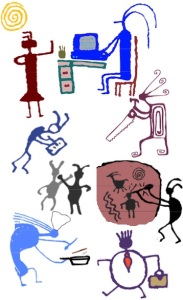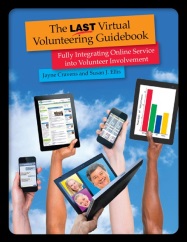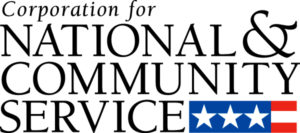 I’m one of the moderators of the forum on Reddit – called a subreddit – on volunteering. Most of the questions on that forum are by people looking to volunteer and, often, they are looking to volunteer for a few weeks in another country. This is voluntourism, and anyone who reads this blog regularly knows I’m not fond of the practice: it is vanity volunteering, focused on giving a foreigner a feel-good experience rather than actually helping someone and, in fact, such “volunteering” can actually harm children, wildlife – even the volunteers themselves.
I’m one of the moderators of the forum on Reddit – called a subreddit – on volunteering. Most of the questions on that forum are by people looking to volunteer and, often, they are looking to volunteer for a few weeks in another country. This is voluntourism, and anyone who reads this blog regularly knows I’m not fond of the practice: it is vanity volunteering, focused on giving a foreigner a feel-good experience rather than actually helping someone and, in fact, such “volunteering” can actually harm children, wildlife – even the volunteers themselves.
In some countries, volunteering by foreigners is, in fact, illegal. Despite its illegality, some NGOs – which are really for-profit companies – try to recruit foreigners to pay thousands of dollars to come “help” in their communities.
For instance, in most cases, volunteering by foreigners in Indonesia is illegal. The Indonesian immigration police in the country make regular visits to certain communities to check the legal status of people who say they are volunteers and foreigners who say they are being paid to work. You can read a news report from July 2016 about one of the raids on foreign volunteers here.
Bukit Lawang in North Sumatra, Indonesia is a popular tourist destination located on the edge of the Gunung Leuser National Park, a UNESCO World Heritage Site home to numerous bird, plant and mammal species, most famously the Sumatran orangutan (Pongo abelii). Nearby tourist businesses operate jungle treks, transport, tours, and other activities in the area – and field a LOT of questions about wildlife volunteering.
bukitlawang.com has a page about the laws regarding volunteering by foreigners in Indonesia, one that I wish more countries and popular tourism sites had. The Bukit Lawang page says that the main type of foreign visas for the country are the following (the bullets are cut and pasted from the site):
-
-
visa-free entry permit (received on arrival, free, at the airport) – voluntary work is always illegal
-
-
-
visa-on-arrival (paid on arrival at the airport at the cost of $35) – voluntary work is always illegal
-
-
-
tourist visa (paid abroad at the cost of around $50) – voluntary work is always illegal
-
-
-
social visa (paid abroad at the cost of around $50) – voluntary work is usually illegal. For the voluntary work to be legal, the social visa must have been sponsored (with an accompanying letter) by a registered Indonesian yayasan (charity/foundation) and during the application, the sponsorship letter must state that the foreigner is performing volunteer work for the foundation. A sponsorship letter that merely says something along the lines of ‘I am an Indonesian citizen and I am sponsoring Mr. X to visit Indonesia’ would NOT be valid for volunteer work in Indonesia, it ONLY entitles you to stay in Indonesia for a holiday/family visit, and no kind of work is permitted. A sponsorship letter from an individual, one that is not stamped by a charity/foundation is almost certainly NOT valid for work in Indonesia.
-
-
KITAS – sponsored by a charity or employer. This costs around $1200 per year (including work permit and visa) and is valid for paid and/or unpaid work of the specified nature at the specified employer.
The page also offers the following throughs about voluntourism. Remember – these are coming from an Indonesia-based organization:
Voluntourism is big business around the globe. In Indonesia specific considerations are:
-
-
low cost of labour – the minimum wage is around $5/day, and many earn even less. If you emphasise the ‘tourism’ aspect of voluntourism, then it may make sense to spend thousands on your trip, but the ‘volunteer’ element may be lacking.
-
-
-
your skills – if you are a young person with no work or life experience unfortunately you may have little to offer except your time. Effective volunteers will have specific skills that are relevant and scarce in a rural developing area.
-
-
-
culture differences – Indonesian culture is very different from your own. Communities are interconnected and foreigners are ‘other’. You will also face a language barrier – while those working in tourism will speak English, these are certainly not the people in need of help – those in need are generally far from the tourist areas.
-
-
-
transparency – Indonesia does not have a big charity culture; rather, charity is said to begin at home, and the concept of working for free is largely alien. You should therefore check exactly how the goals of the charity or project organiser himself are aligned with those of the charity. Do not be afraid to ask questions. Indonesian staff need money, but they must explain to volunteers exactly how they benefit financially from their charity.
-
-
-
safeguarding – Indonesia and other developing countries are open and have few safeguarding policies in place. This means that children can be at risk. If your project is working with children be sure to check about their safeguarding policies
-
-
-
effectiveness – be sure that your project is effective in achieving its and your goals. Ask specific questions and look at how results are measured.
-
-
immigration concerns – your volunteer work is likely to be illegal – see above.
It’s refreshing to see a local institution speak out so strongly against voluntourism and be so explicit about what the law is.
All that said, I should note that it is certainly possible for foreigners to visit Gunung Leuser National Park and see the Sumatran orangutan, something I hope to do myself someday. I learned about it by reading Lone Rider by Elspeth Beard. She’s one of the first women to ride a motorcycle all around the world, doing so back in 1982 – 1984. She wrote about an NGO working in this area, helping to address the huge problem of Indonesians abducting baby orangutans and then wanting to get rid of them when they grow older and are so much harder to care for. Her account of this visit is a good example of transire benefaciendo: “to travel along while doing good” – she didn’t attempt to work at the NGO as a volunteer (which would have been illegal), but she did elevate its work through her book.
I did something similar in Hungary: while camping in Hortobágyi Neuzeti Park, a sea of grasslands, the camp host told us that there was a bird rescue clinic right next door. The next morning, I went there. It turned out the clinic allowed visitors, so we toured, taking photos of their rehabilitation rooms and spaces and getting information, which I translated once we were home so that I could write about the Hortobágy Bird Clinic on my blog. Here is the web site of the clinic as well.
In addition to researching the laws regarding foreign volunteers in a country where you want to go, you should also look at your own country’s laws regarding going elsewhere to volunteer. For instance, Tauqir Sharif, 31, from Walthamstow, England, founded the organization Live Updates from Syria in 2012, providing support and assistance for families in Syria and raising awareness about the devastating situation on the ground. He has been living and working in Idlib, Syria alongside his British wife, Racquell Hayden-Best. He had his UK citizenship revoked in May 2017.
Also see:
- Paying thousands to volunteer abroad & ignoring same opportunities at home
- More Than Me scandal in Liberia: a lesson to all who “just want to help”
- Isn’t my good heart & desire enough to help abroad?
- Vanity Volunteering: all about the volunteer
- In defense of skills over passion
- Want to work internationally? Get involved locally.
- Is it really *impossible* to break into humanitarian work?
- Volunteers themselves speaking out about voluntourism
- J.K. Rowling speaks out against orphan tourism
- Medical Voluntourism Can Cause Serious Harm
- The harm of orphanage voluntourism (& wildlife voluntourism as well)
- Ideas for Creating Your Own Large-Scale Volunteering Activity

 I got this message from a friend. And then I had another situation I had wanted to offer up on a blog as well. So… what do you think about the ethics of required parental volunteering in schools?
I got this message from a friend. And then I had another situation I had wanted to offer up on a blog as well. So… what do you think about the ethics of required parental volunteering in schools? It’s the FIVE-YEAR anniversary of the publication of my book with Susan Ellis,
It’s the FIVE-YEAR anniversary of the publication of my book with Susan Ellis,  The Corporation for National Service has released its
The Corporation for National Service has released its  Updated February 1, 2019, at the bottom of the blog entry:
Updated February 1, 2019, at the bottom of the blog entry: The
The 
